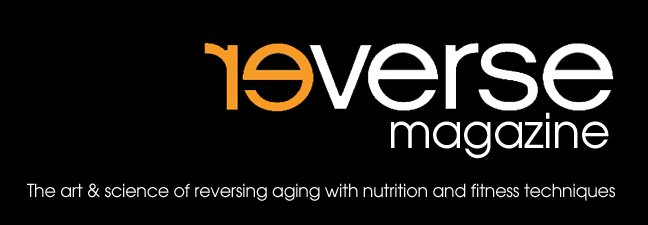
Father time can be cruel. The above photo of film tough guy, Clint Eastwood, shows that even the physically elite do not escape aging. The idea is to optimize a strategy to age well. A recent forum post by noted strength coach, Dan John, gave his rather sophisticated approach to fighting the changes associated with abundant time on this planet. I've edited some of Dan's technical terms for more clarity. Insiders in the strength game sometimes talk in another language!
"A couple of quick suggestions: first, the role of muscle building needs to be addressed. One of things that starts to mellow out is the "passion" to train. Honestly, I don't have the answer there, but a few years ago, DHEA was argued to be the answer here. So, whatever it takes to reignite the spark, do it. I suggest camps, workshops, seminars, or any kind of full leap back into whatever lights you up. Relearn everything. I think that might be part of the reason things like the Kettlebells really got me going again. Call it immersion.
With that, the older guy also needs to address specific strength and muscle building issues. Now, be sure to look up tonic and phasic muscles and you really want to build up the deltoids, triceps, rhomboids, and glutes with explosive big movements. Doing stuff like Double Kettle bell Clean and Press or Double Kettle bell Clean and Front Squat will do a lot for you. At the same time, you need to do some flexibility work , but just what you need. I find stretching the pectorals, the hamstrings, the hips, the psoas and the calves to be plenty. Absolutely, things like Bikram Yoga are great, but you can get by with much less.
Don't be afraid to do workouts like my 2-3-5-10 press workout that emphasize one weight but you get 20 reps fast. Do that five times and you have 100 reps...good for hypertrophy, yet little damage to the system.
("It's the exercise where, when people see me, they say, 'Your shoulders have gotten huge! What do you do for them?' What I do is double kettlebell presses. If you want to add size [to your shoulders], here's a series to do: do a set of 2, then a set of 3, then a set of 5, then a set of 10, and repeat that [up to four more times]. Use the same weight throughout and minimize rest between sets. If you repeat that series five times, you've done 100 kettle bell presses, and that's a huge workout. It's just a marvelous workout for building size.")
Passion can come back through gaining muscle and a little fat loss. Take your Vitamin D, follow Atkins's Induction Phase, (see the recent books) and get in the sun. For supplements, do stuff like Acetyl-L Carnitine, Alpha Lipoic Acid and more Fish Oil than you think. Also, pound down the orange flavored sugar free Metamucil. Drink your water, floss twice a day, wear a seat belt and....a big one...donate blood five times a year.
Honestly, that newer Atkins book, something like the companion or something, is a great thing to follow. Eat all you want of fish, eggs, meat, poultry...one cup of cooked veggies a day....3-4 cups of raw veggies and drink a lot of water. If you drink, but the book, "Martinis and Whipped Cream." Too bad "LoCarbCris" no longer has a site. She had great low carbohydrate drink recipes. Crystal Light and either rum, vodka or tequila is a pretty good little "how you doing!."
Sleep is huge. I take ZMA, Z-12, Fish Oil, Alpha Male ( http://www.biotest.net/ ) and some Metamucil before bed (about 45 minutes before bed) every night. I also invested in good shades, good pillows, and I worry about comfort in bed. It's worth every nickel to invest in sleep. If you live in a dorm, buy ear plugs, eye shades and a CD or something that will teach you to relax and sleep. Underrated advice here...
Train in two week blocks. If you do Kenneth Jay's VO2 max, an excellent plan, do it like I do: an 8 minutes workout, a 12 and a 15. Do THAT five times every two weeks. So, week one is 8/12/15 then week two is 8/12 and week three is 15/8/12...you get the drift. Work over two weeks. If you do something like I just mentioned, week two might be three lifting sessions where weeks one and three are two. Also, you need to nail down this issue: do I do light days or off days. I can't do light. I can only workout, so for me, an easy day is "off."
( http://www.dragondoor.com/b39.html )
Don't ignore these final two things: either do Farmer Walks and/or Sprints about twice a week. I call my sprints the "Great 8." I start off slow and taper. I don't measure the sprints and merely strive for 4 "Down and Backs." The idea is to be smooth and get into a sprinting movement. Farmer Walks for distance is something you also need to do. I would argue these last two ideas tie into everything I have said (see tonic and phasic...explosive glute work...two week blocks, whatever), but many people will become addicted to the gym for their answers and the answer is probably outside. ( http://danjohn.org/ )
Having said all of this, remember that part of the victory is simply playing longer than anybody else. I'm 52 and I'm already planning how to beat the crap out of college kids next year. In ten years, I would love to say that these guys will be competing but I have the sense that I will be in the kilt or the ring or the field and they will be discovering Scotch.
Certainly, there is more, but take care of some of this..."
Dan John's book and incredible DVD's can be purchased at www.davedraper.com






